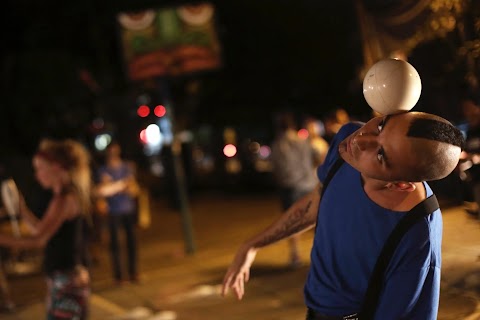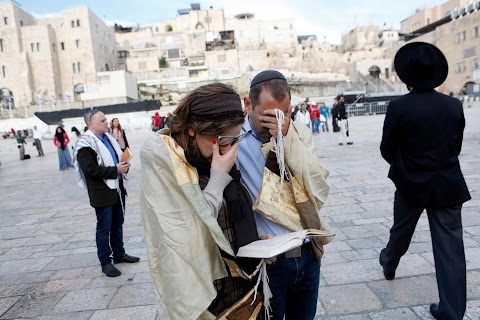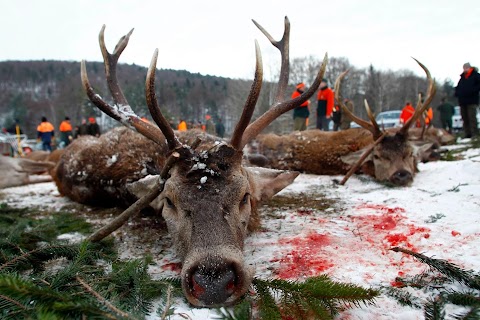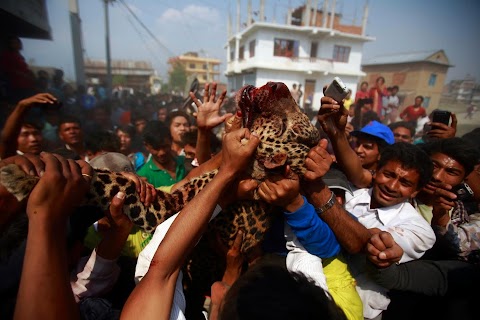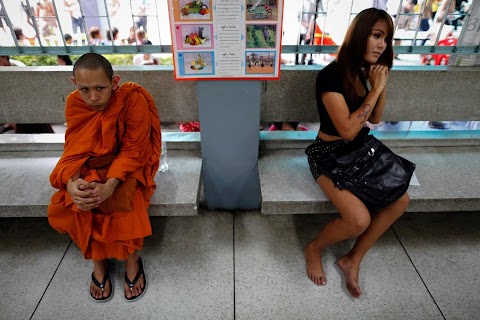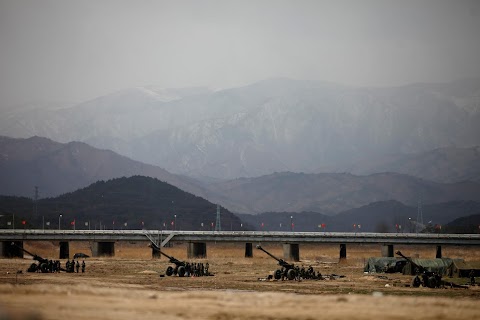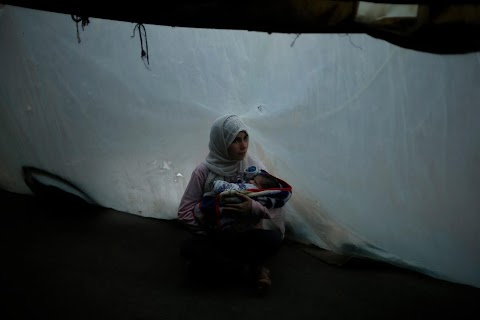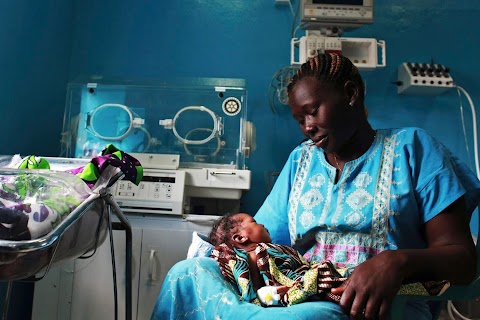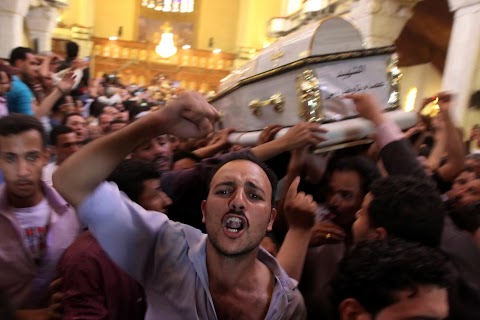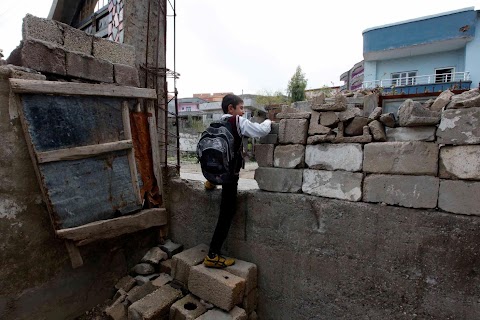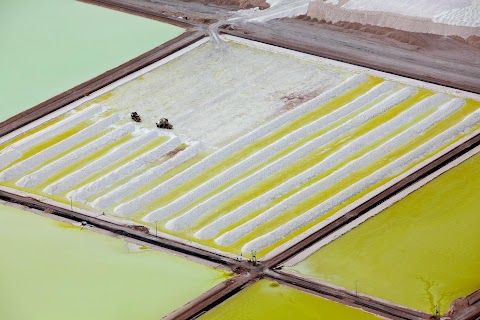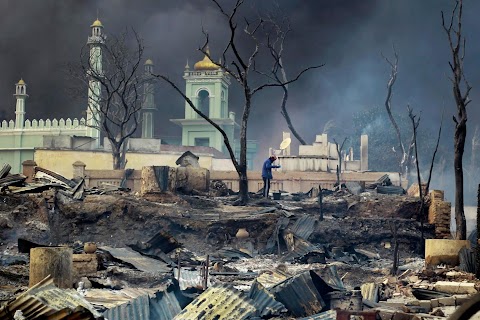
Sectarian hatred unleashed
 Soe Zeya Tun
Soe Zeya Tun
A mosque burns in Meikhtila, central Myanmar, during sectarian riots that killed at least 43 and drove nearly 13,000 people, mostly Muslims, from their homes.
The unrest is one example of ethnic violence unleashed in Myanmar since 49 years of military rule ended in March 2011. It is spreading, threatening the country's historic democratic transition, and signs have emerged of ethnic cleansing, along with impunity for those inciting it.

A Muslim woman salvages belongings from her home, damaged in riots that broke out in Meikhtila on March 20 and raged for four days. They caused dozens of deaths, including a dawn massacre of 25 Muslims led by Buddhist monks - often held up as icons of democracy in Myanmar. The killings took place in plain view of police, with no intervention by the local or central government.
Authorities imposed martial law on the afternoon of March 22, the third day of violence. By then, only three people had been arrested, all of them for carrying weapons, a police official said. As they began to make more arrests, the unrest ended the next day.
The bloodshed was followed by Buddhist-led mob violence in at least 14 other villages in Myanmar's central heartlands and put the Muslim minority on edge across one of Asia's most ethnically diverse countries.

A person's corpse burns in the street during the violence in Meikhtila.
The unrest was sparked by a dispute between a Buddhist couple and the Muslim owners of a gold shop, which spiralled into a riot.
The first man to die was a Buddhist monk slain by Muslims, but the following morning an attack took place in which up to 25 Muslims were killed. A Buddhist mob dragged their bloodied bodies up a hill in a neighbourhood called Mingalarzay Yone and set the corpses on fire.
Some were found butchered in a swamp. A Reuters cameraman saw the charred remains of two children, aged 10 or younger.

On the streets of Meikhtila, witnesses saw monks from well-known local monasteries as well as others from Mandalay, the country's second-largest city. One such visitor was the nationalistic monk Wirathu, pictured here.
Wirathu is an abbot in Mandalay's Masoeyein Monastery, a sprawling complex where he leads about 60 monks and has influence over more than 2,500 residing there. From that power base, he is leading a fast-growing movement known as "969," which encourages Buddhists to shun Muslim businesses and communities.
"We have a slogan: When you eat, eat 969; when you go, go 969; when you buy, buy 969," Wirathu said in an interview. Translation: If you're eating, travelling or buying anything, do it with a Buddhist.

A sticker of the anti-Muslim "969" movement is seen at a shop in Minhla.
The three numbers refer to various attributes of the Buddha, his teachings and the monkhood. In practice, the numbers have become the brand of a radical form of anti-Islamic nationalism.
Slideshow

A Buddhist woman cries for her home that was burned down during the riot in Meikhtila.

Large areas of the city were reduced to ashes. A total of 1,594 buildings were destroyed, the regional government said.

People arrive at a stadium used as a refuge for Muslims. It's unclear if the fleeing Muslims whose businesses were destroyed will be able to reclaim their prime real estate.

A woman cries after losing her two sons during the riot.

Muslim refugees reach out for donations at the makeshift refugee camp in the stadium.

A man walks through a neighbourhood damaged in the riots.

People walk down the street carrying weapons during the unrest.

Soldiers clean up debris left behind by the violence.

People ride their mopeds past the remains of two people killed in the clashes.

Policemen patrol an area where riots took place.

Muslims emerge from their homes after a senior Buddhist monk and police arrived to protect them during the unrest.

Patients who were injured in the violence lie in hospital.

An Islamic school stands in ruins after the unrest.

A Muslim man cleans the room of an Islamic school in central Yangon, where 13 boys were killed in a fire. Many grieving relatives say they believe the blaze was deliberately set: the floors were surprisingly slick with oil, they said. Yangon officials say it was caused by an electrical short circuit.

Muslim men pray at the Islamic school where the boys died. Security has been tightened in parts of Yangon after the fire.
